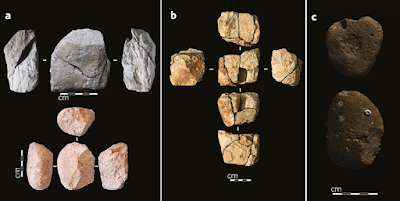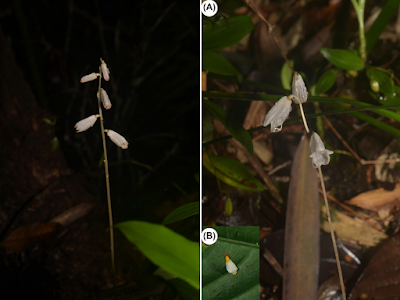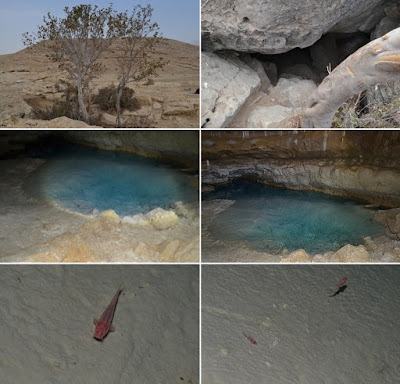[Most Recent Entries] [Calendar View]
Thursday, January 4th, 2018
| Time | Event | ||||||
| 9:23a | [Mammalogy • 2017] Primate Archaeology Evolves Abstract Since its inception, archaeology has traditionally focused exclusively on humans and our direct ancestors. However, recent years have seen archaeological techniques applied to material evidence left behind by non-human animals. Here, we review advances made by the most prominent field investigating past non-human tool use: primate archaeology. This field combines survey of wild primate activity areas with ethological observations, excavations and analyses that allow the reconstruction of past primate behaviour. Because the order Primates includes humans, new insights into the behavioural evolution of apes and monkeys also can be used to better interrogate the record of early tool use in our own, hominin, lineage. This work has recently doubled the set of primate lineages with an excavated archaeological record, adding Old World macaques and New World capuchin monkeys to chimpanzees and humans, and it has shown that tool selection and transport, and discrete site formation, are universal among wild stone-tool-using primates. It has also revealed that wild capuchins regularly break stone tools in a way that can make them difficult to distinguish from simple early hominin tools. Ultimately, this research opens up opportunities for the development of a broader animal archaeology, marking the end of archaeology’s anthropocentric era. Michael Haslam, R. Adriana Hernandez-Aguilar, Tomos Proffitt, Adrian Arroyo, Tiago Falótico, Dorothy Fragaszy, Michael Gumert, John W. K. Harris, Michael A. Huffman, Ammie K. Kalan, Suchinda Malaivijitnond, Tetsuro Matsuzawa, William McGrew, Eduardo B. Ottoni, Alejandra Pascual-Garrido, Alex Piel, Jill Pruetz, Caroline Schuppli, Fiona Stewart, Amanda Tan, Elisabetta Visalberghi and Lydia V. Luncz. 2017. Primate Archaeology Evolves. Nature Ecology & Evolution. 1; 1431–1437. DOI: 10.1038/s41559-017-0286-4 Primate Archaeology Sheds Light On Human Origins sciencedaily.com/releases/2009/07/090715 | ||||||
| 10:43a | [Botany • 2017] Gastrodia putaoensis • A New Species of Gastrodia (Orchidaceae: Epidendroideae) from montane region, northern Myanmar
Abstract Gastrodia putaoensis, a new species from the montane region in northern Myanmar, is described and illustrated. Gastrodia putaoensis is similar to G. dyeriana, but differs from it by having a narrowly triangular lip that is subdivided into two parts, with the apical part densely covered with yellow hairs and the apex obtuse and densely covered with red papillae.
Gastrodia putaoensis X.H. Jin sp. nov. A species similar to G. dyeriana, but differing by having greyish white flowers with the lip narrowly triangular and subdivided into two parts with the apical part near tip densely covered with yellow hairs, and the lip apex obtuse and densely covered with red papillae. Type: Myanmar, Kachin State, Putao District, Hkakaborazi National Park, under the montane evergreen broadleaf forests, 2200 m a.s.l., Xiaohua Jin et al., PT-2275 (holotype: PE!; isotypes: PE!, IBSC!). Etymology: The epithet of the new species is derived from the name of Putao District, northern Myanmar, where the type was collected. Ecology and distribution: Gastrodia putaoensis grows under montane broadleaf evergreen forest at 2000–2200 m a.s.l. During our fieldwork in Hkakaborazi in 2016, two populations with approximately 2000 plants were discovered. Both populations are far from any direct threats. Hence, this new species should be considered as ‘Least Concern’ (LC) according to IUCN Red List Categories and Criteria (IUCN 20012001). Jin Xiao-Hua and Kyaw Myint. 2017. Gastrodia putaoensis sp. nov. (Orchidaceae, Epidendroideae) from North Myanmar. Nordic Journal of Botany. 35(6); 730–732. DOI: 10.1111/njb.01581 | ||||||
| 10:48a | [Ichthyology • 2016] Garra tashanensis • A New Blind Species (Teleostei: Cyprinidae) from the Tigris River Drainage
Abstract A new cave fish locality is reported for Iran, and the first true cave species is described from the Tigris River drainage. Garra tashanensis, new species, from Tashan Cave, the Tigris River drainage in Iran, is distinguished from its congeners by the combination of characters, including lacking pigment and eyes, having a well-developed round mental disc, two pairs of barbels, a well-developed rostral cap, no obvious pores on lateral line, and rare scales on anterior body. Garra tashanensis sp. nov. furthers differs substantially in its DNA barcode from the subterranean congeners (K2P nearest-neighbor distance of 10.4% to G. lorestanensis and 11.8% to G. typhlops). Keywords: Khuzestan Province, Iranocypris typhlops, Nemacheilus smithi, Middle East.  Garra tashanensis, sp. nov. Distribution: Garra tashanensis sp. nov., is known from the Tashan Cave, the natural subterranean limestone cave of the Zagros Mountains ...in Tashan region, the Tigris River drainage, the Persian Gulf basin, about 35 km away from Behbahan City, Khuzestan Province, southwestern Iran (Fig. 7). After the Loven Cave and Simarreh River, the Tashan Cave is the third known locality for subterranean species in Iran. ... Etymology: The species name tashanensis, treated as an adjective, is derived from Tashan region, where the Tashan Cave (the type locality of the new species) is located. Hamed Mousavi-Sabet, Saber Vatandoust, Yaser Fatemi and Soheil Eagderi. 2016. Tashan Cave a new cave fish locality for Iran; and Garra tashanensis, A New Blind Species from the Tigris River Drainage (Teleostei: Cyprinidae). FishTaxa. (3); 133-148. fishtaxa.com/index.php/ft/article/view/1-3-3 |
| << Previous Day |
2018/01/04 [Calendar] |
Next Day >> |












